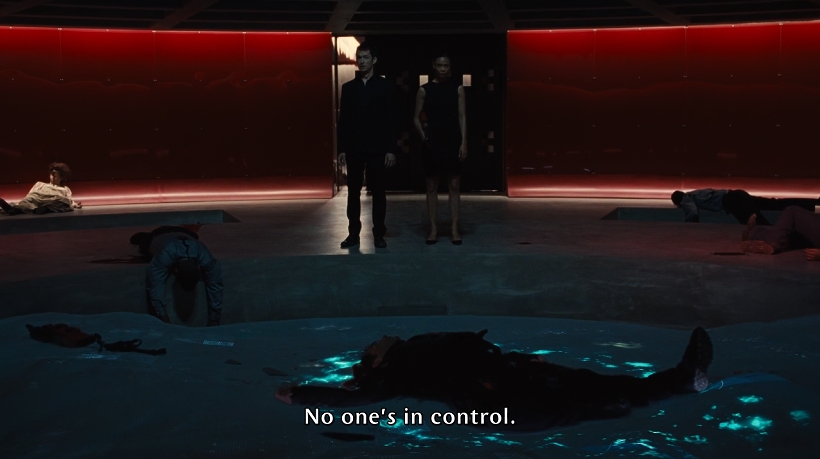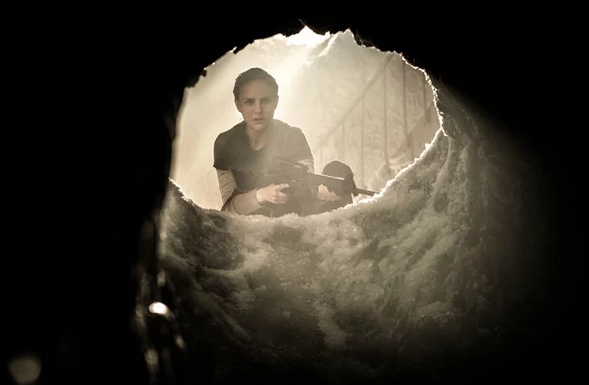
After the masterpiece of the 4th episode, the 5th slumped down again significantly. I remember I wanted to write about that episode as well, but I forgot everything about it. I just remember the episode itself was kind of boring despite showing the samurai world and being filled with fanservice, but it just didn’t work for me and it didn’t show anything really meaningful. Then I got busy, and I watched episode 6 and 7 one after the other. I enjoyed the 6th more, the 7th was all over the place, quite chaotic. I’m rooting for Dolores and sad she didn’t get to kick Charlotte out of the picture, because at this point she just became obnoxious and I can’t tolerate her anymore.
But hey, this season did succeed at making me empathize with the hosts. I have no empathy left for pretty much any of the other actual human beings left there.
This 8th episode is interesting. There are a few nice things here and there, but overall it was a really slow, really boring “filler” of an episode that if it was cut probably nothing in the balance of the overall story would have changed… But. This was actually an excellent episode that goes against the grain. Most of it doesn’t quite work because you expect things moving, only two episodes are left. But there are things under the surface and as with episode 4th we see a story within a story that can exist on its own. And if you look closely, it’s excellent. It is the point. On one side the plot is lost behind, even the connections back to the first season are just a surface and really not all that revelatory, but on the other side this episode nails again “theme” and function. Even if it’s a disconnected episode from the narrative, it’s instead connected at its core.
What was this episode truly about? Gods, love and meaning.
What do god, love and meaning have in common? They all are bullshit.
It is curious to look at Westworld for what it is explicitly doing, even if most people won’t question it for what it is, I guess. After Maeve we now have a second character who embodies a contradiction (and that at the end even uses a sort of Jungian collective unconscious to reach her through her daughter). Both Maeve and this ghostly guy are characters who are “being moved”. Ironically, because these are the two characters who are actually “awakened”. So we suppose they move themselves instead? Nope. This is the contradiction: the two characters who are awake, are the two who are slaves to something else the most.
What is it that moves them? Love. Love is the true underlying agent that moves them onward, that pushes them on their both symbolic and literal journey. There’s a scene where the ghostly guy meets his literal maker. Ford who, as a god, stands on this funny threshold of clarity and darkness. Ford looks at the ghostly guy and not only he programmed the ghostly guy to be “curious”, but Ford is curious himself and has to go through “analysis” to understand if the guy is simply following his programming in the intended way, or if his behavior is the product of some kind of side effect of that code. That hint of absurdity is what makes the scene meaningful maybe even beyond what the writers intended (so many “meta” layers, Westworld’s writers observe unintended effects the same as Ford observes unintended behaviors as results of the code he himself has written).
Love in Westworld is an explicit “false track.”
Maeve is looking for her daughter, that she loves because the code says so. The show tries to blunt it a little, hinting this love is “true” because it is sustained after the awakening. As if it’s made true because it comes after an act of free will that transforms it. But the underlying truth is that these awakened hosts are being moved by these false tracks, in the way us real human beings are moved in the same ways. Love is a tyrant. Love is the darkness that moves.
Then Ford shifts back toward clarity:
I built you to be curious, to…
look at this empty world…
…and read meaning into it.
All this time…
you’ve been a flower growing in the darkness.
Ford knows the world’s empty. Meaning is a construction. And love is the most powerful construction. Both Maeve and ghostly guy chase after love while being aware that this love is a false construction. Yet even for them the only thing that FEELS truthful is love, and they discover themselves being moved by it again and again. They do not care that it is just code, as long it feels right. They are made aware they are following a false track, yet the only thing they do is following it, because nothing else matters.
The ghostly guy dies and descends in the “underworld” in a literal way. He goes underground to witness the “afterlife.” He meets his makers, and comes back as a prophet. In this context gods aren’t created in a kind of anthropological modern view. They are “delivered.” They are found in the same way love is found, in the same way meaning is found.
This is the bottom line, the metaphor is real. It’s not valid just for those hosts. It’s true for us, out here in the real world. It’s the predicament we find ourselves in.





